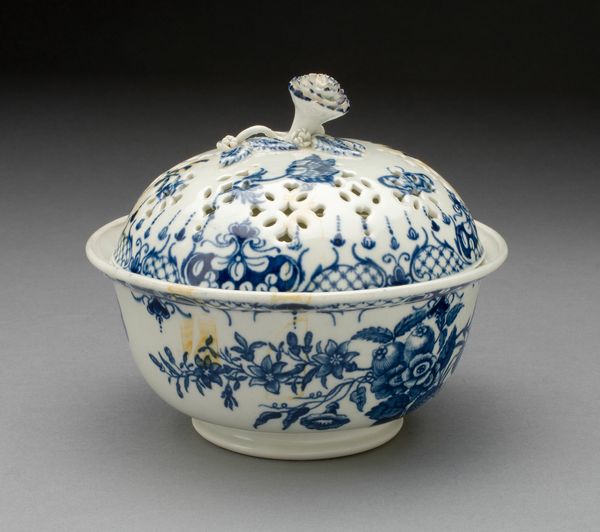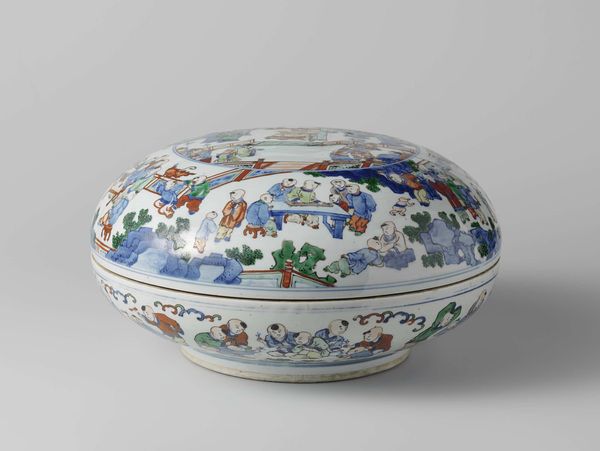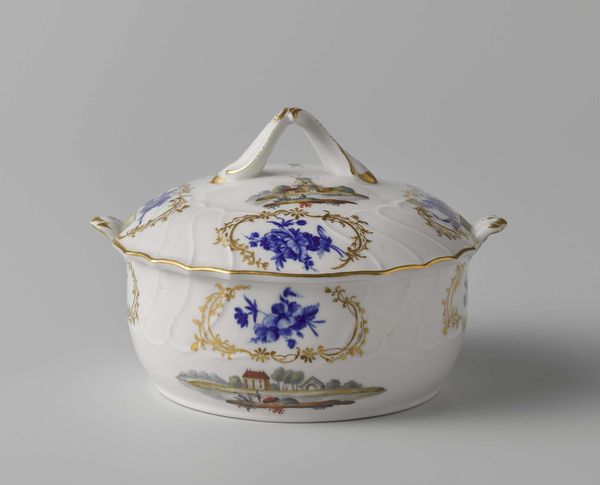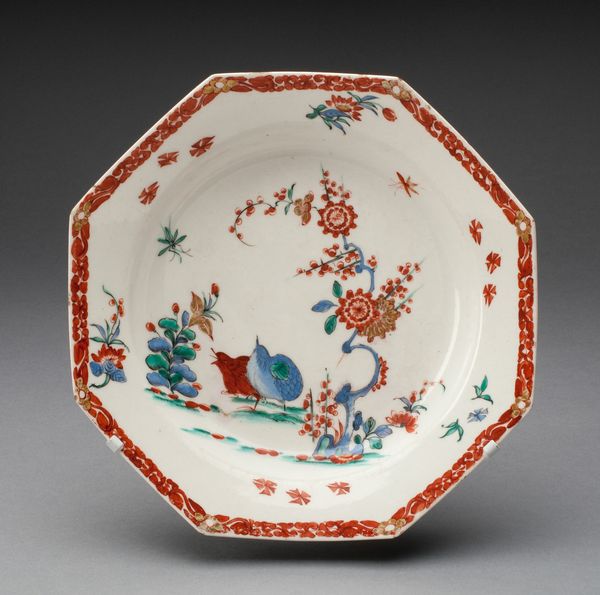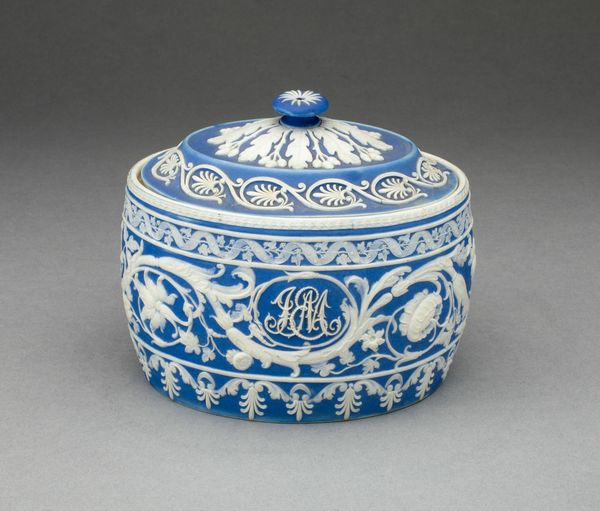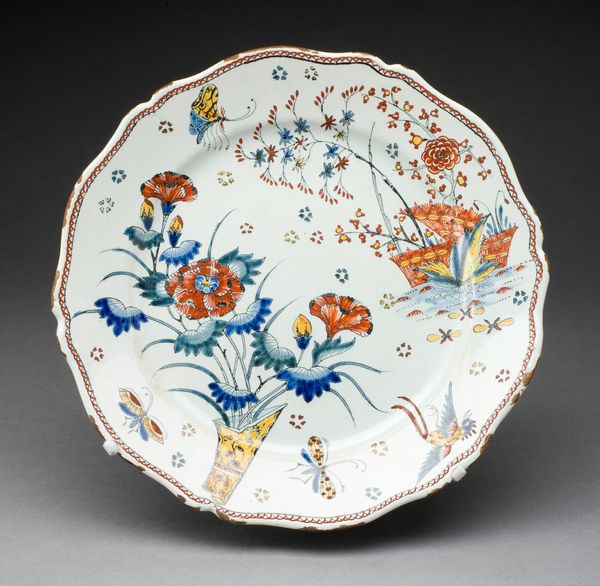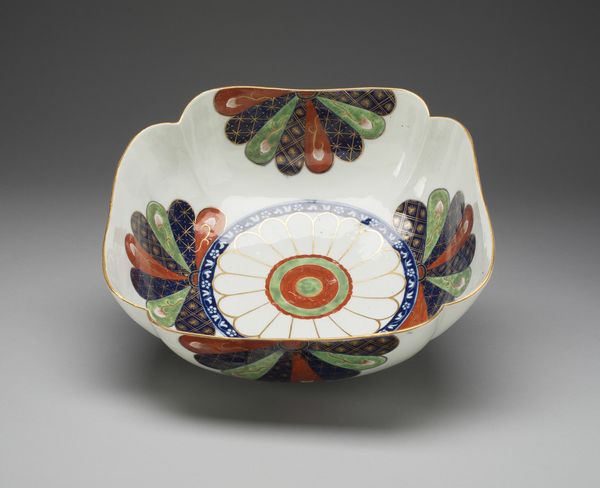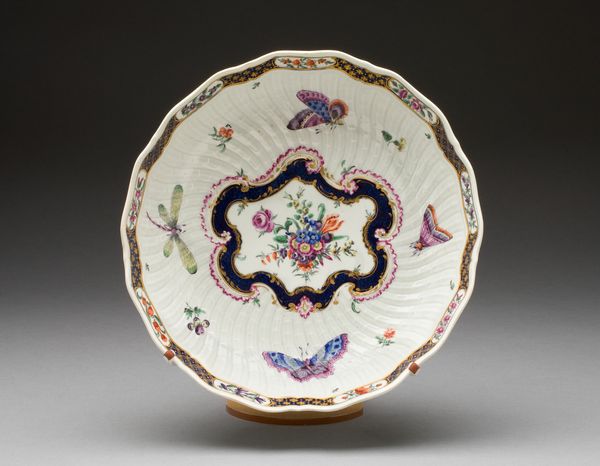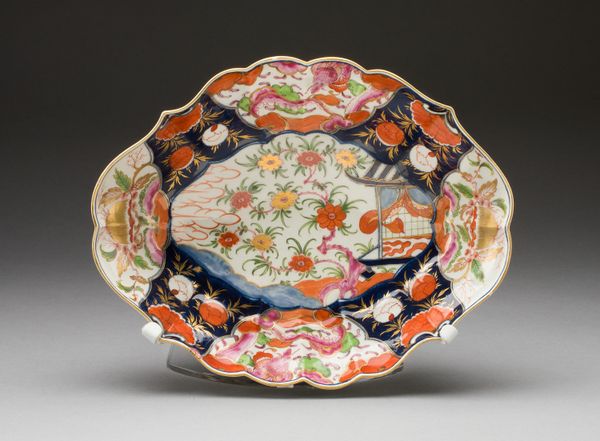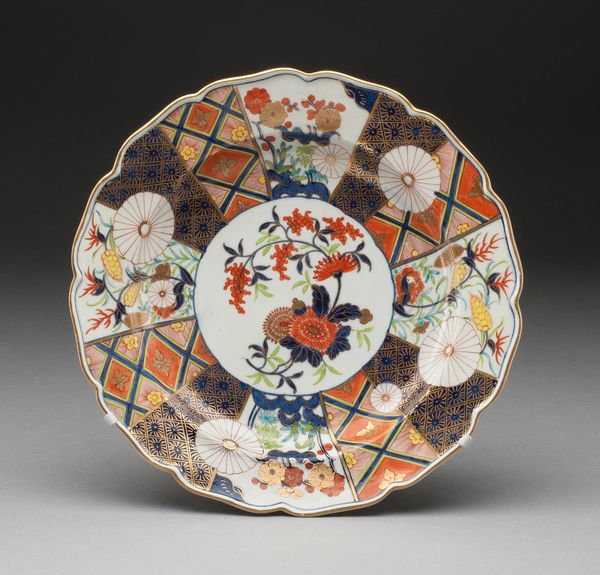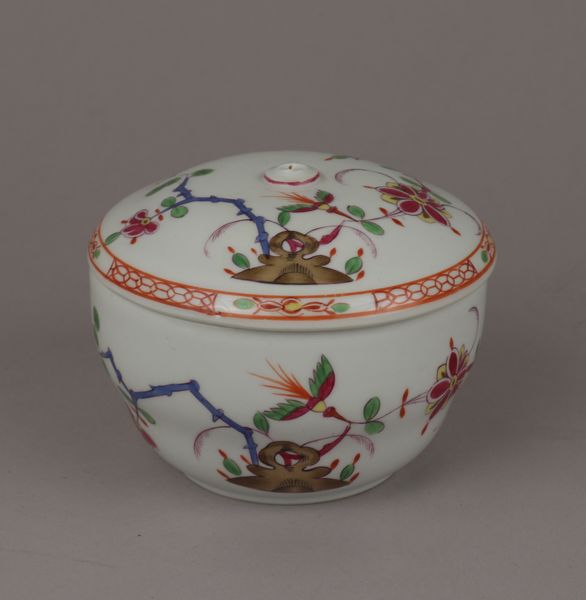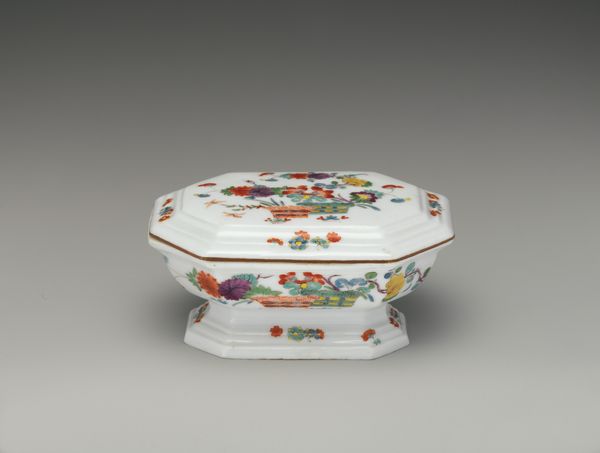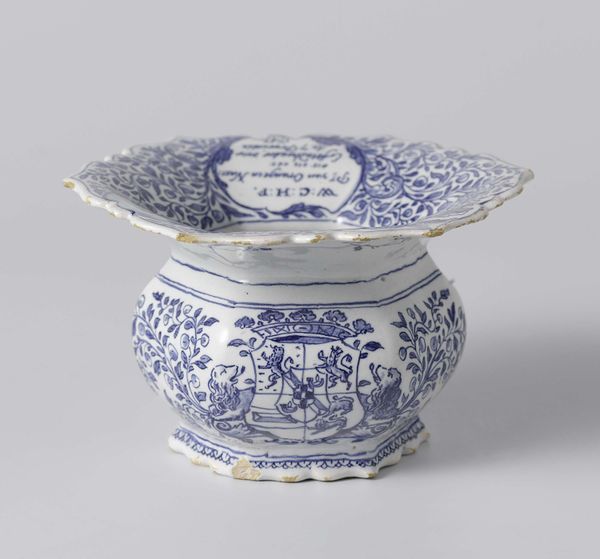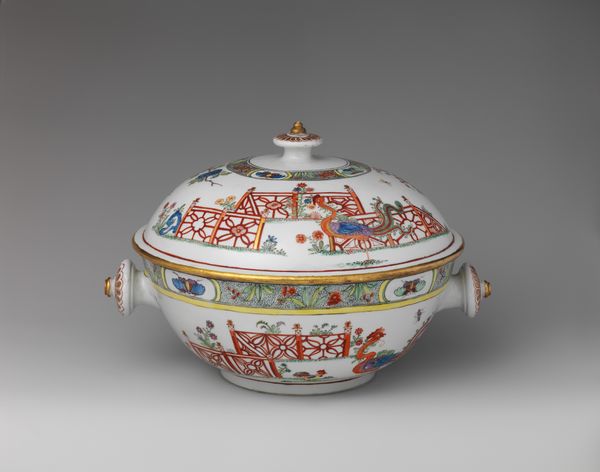
Terrine met deksel in de vorm van een gegodronneerd cirkelsegment 1700 - 1725
0:00
0:00
ceramic, earthenware
#
baroque
#
ceramic
#
earthenware
#
orientalism
#
ceramic
#
decorative-art
Dimensions: height 17.5 cm, diameter 23 cm
Copyright: Rijks Museum: Open Domain
Editor: Here we have a 'Terrine met deksel in de vorm van een gegodronneerd cirkelsegment' – a terrine with a lid in the shape of a gadrooned circle segment. It's earthenware, made by Jacob van der Kool sometime between 1700 and 1725. The piece is giving a cheerful vibe, almost whimsical. The floral decorations are lovely, but I am not familiar with the use of earthenware for these kind of objects. What stands out to you in this work? Curator: It's fascinating to consider this terrine through a material lens. Earthenware, though common, gains new significance here when fashioned into a luxury item emulating, perhaps, more prestigious materials like porcelain. Who would have been using such a piece? How does the relatively inexpensive base material factor into its design and purpose? Editor: I hadn't thought about it like that! It's almost a statement on accessibility, or maybe an attempt to democratize luxury. But the "orientalism" tag also makes me wonder about the cultural influences in the materials and the crafting process. Curator: Exactly! The "orientalism" style tag highlights the West's fascination with Asian aesthetics. This craze deeply influenced European ceramics at the time, but through colonial exploitation. The cobalt needed for those vivid blues, for example, involved global trade networks with roots in imperial economies and extraction of raw materials. Editor: So, this lovely piece isn't just decorative. It tells a story of trade, labor, and material value, reframing luxury through accessible materials and appropriated styles. Curator: Precisely! And that reframing alters its social context, reflecting and shaping contemporary attitudes towards value and artistry. We begin to see the object as not just beautiful, but reflective of a complex network of global exchange and power dynamics. Editor: I'll never look at decorative arts the same way again. This makes me see it in a different light! Thank you. Curator: Indeed, appreciating art requires considering its making – its materials, processes, and placement in a larger socioeconomic system.
Comments
No comments
Be the first to comment and join the conversation on the ultimate creative platform.
